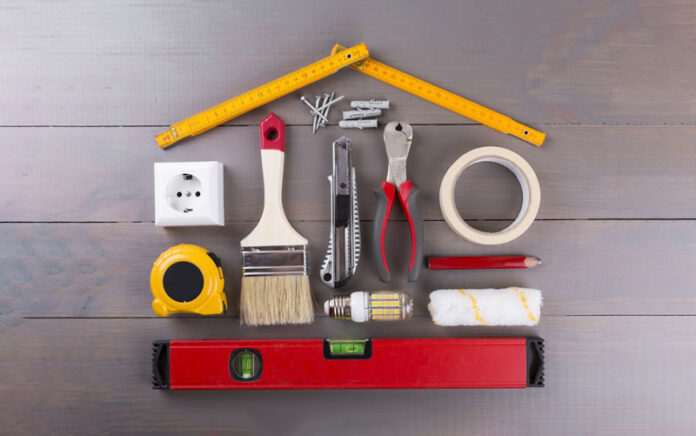DIY Home Improvement: Tips for Beginners
Introduction
Are you ready to transform your living space into a haven of beauty and functionality? Home improvement projects can be an exciting endeavor, allowing you to unleash your creativity and add value to your property. Whether you’re a first-time homeowner or someone who has always wanted to try their hand at DIY projects, this article is tailored to provide you with essential tips and guidance to embark on your home improvement journey. Let’s dive in!
Assessing Your Skills and Goals
Before you roll up your sleeves and grab your toolbox, it’s important to assess your skills and set realistic goals. As a beginner, it’s crucial to start with projects that are within your comfort zone. Consider your level of experience, the tools you have, and the time you can dedicate to the project. By starting small and gradually working your way up, you’ll build confidence and develop new skills along the way.
Planning and Research
Just like any successful venture, proper planning and research play a significant role in the world of home improvement. Begin by identifying the area or aspect of your home you wish to improve. It could be a bedroom, kitchen, bathroom, or even the outdoor space. Once you’ve chosen your project, gather inspiration from magazines, websites, or even social media platforms like Pinterest.
Budgeting
Now that you have a clear vision of your project, it’s time to set a budget. Determine how much you’re willing to spend and allocate funds for materials, tools, and any professional help you may need. Remember that it’s essential to be realistic with your budget to avoid unexpected expenses down the line. Researching the cost of materials and comparing prices from different suppliers can help you make informed decisions and save money.
Essential Tools for Beginners
Having the right tools can make a world of difference in the success of your DIY home improvement projects. Here are some essential tools that every beginner should have in their toolbox:
- Hammer: A versatile tool used for driving nails, removing old fixtures, and more.
- Screwdriver Set: Invest in a set of different-sized screwdrivers, both flathead and Phillips.
- Measuring Tape: Accurate measurements are crucial for any project. A measuring tape will be your best friend.
- Level: Ensure your shelves, pictures, and other installations are straight with a reliable level.
- Utility Knife: Perfect for cutting materials like carpet, vinyl, and drywall.
- Pliers: A handy tool for gripping, twisting, and cutting wires or other materials.
- Drill: An electric drill will make drilling holes and driving screws a breeze.
- Safety Gear: Don’t forget to prioritize safety with items like safety goggles, gloves, and a dust mask.
Starting with Simple Projects
Now that you have the right tools, it’s time to start with simple projects that will allow you to gain confidence and experience. Here are a few ideas to get you started:
- Painting: One of the easiest and most transformative projects, painting a room can breathe new life into your home.
- Installing Shelves: Add storage and display space by installing shelves on your walls.
- Updating Cabinet Hardware: Give your kitchen or bathroom a quick facelift by replacing old cabinet knobs and pulls.
- Adding a Backsplash: Enhance your kitchen or bathroom with a stylish backsplash. There are many easy-to-install options available.
- Replacing Light Fixtures: Upgrade outdated light fixtures with modern ones to instantly elevate the ambiance of any room.
Remember, the key is to start small and gradually take on more complex projects as you gain confidence and expertise.
Safety First
When it comes to DIY home improvement, safety should always be a top priority. Here are a few safety tips to keep in mind:
- Protective Gear: Wear appropriate safety gear, including goggles, gloves, and a dust mask, when working with tools or materials that may pose a risk.
- Electricity Precautions: If your project involves electrical work, turn off the power to the area you’re working on and use a circuit tester to ensure there’s no electricity flowing.
- Ladder Safety: When using a ladder, make sure it’s stable and placed on a flat surface. Always maintain three points of contact and avoid overreaching.
Seeking Professional Help
While DIY projects can be rewarding, some tasks may require professional expertise. Plumbing, electrical work, or structural modifications are examples of projects best left to professionals. It’s important to know your limits and seek professional help when needed. Hiring a skilled contractor or handyman can save you time, money, and potential headaches in the long run.
Learning Resources and DIY Communities
The digital realm is a treasure trove of learning resources and communities for DIY enthusiasts. Websites, forums, and video tutorials offer step-by-step guides, tips, and inspiration for various home improvement projects. Engaging with these communities allows you to connect with like-minded individuals, ask questions, and learn from their experiences. Some popular DIY websites and communities include DIY Network, This Old House, and HomeTalk.
Maintaining a Growth Mindset
Home improvement is a continuous learning process. Embrace mistakes as learning opportunities and don’t be discouraged by setbacks. With each project, you’ll gain new skills and knowledge, allowing you to take on more challenging endeavors in the future. Remember, Rome wasn’t built in a day, and your DIY skills will evolve.
Additional Safety Precautions During DIY Home Improvement Projects
Ensuring safety should always be a top priority when engaging in DIY home improvement projects. In addition to the safety tips mentioned earlier, here are some additional precautions to keep in mind:
1. Read and Follow Instructions
Before using any tools or working with specific materials, carefully read and understand the manufacturer’s instructions. Familiarize yourself with proper handling, usage, and safety guidelines. Following instructions will help prevent accidents and ensure that you’re using the tools and materials correctly.
2. Use Personal Protective Equipment (PPE)
Personal Protective Equipment (PPE) is crucial for safeguarding yourself during home improvement projects. Here are some essential PPE items to consider:
- Safety Glasses: Protect your eyes from flying debris, dust, or chemical splashes.
- Gloves: Choose gloves that are appropriate for the task at hand, such as work gloves for general projects or chemical-resistant gloves for handling hazardous substances.
- Respirator or Dust Mask: Depending on the project, you may need a respirator or dust mask to avoid inhaling harmful particles or fumes.
- Ear Protection: When working with loud tools or machinery, wear earplugs or earmuffs to protect your hearing.
3. Maintain a Clean and Organized Work Area
A cluttered work area can increase the risk of accidents and injuries. Keep your workspace clean, organized, and free of any unnecessary objects or hazards that could cause trips or falls. Properly store tools and materials when not in use to prevent accidents and maintain a tidy environment.
4. Use Tools and Equipment Safely
Using tools and equipment properly is vital for your safety. Here are some key points to remember:
- Sharp Tools: Keep cutting tools sharp to prevent slips and ensure clean cuts. Dull tools can be more dangerous to use.
- Power Tools: Follow safety guidelines for each power tool. Use them in well-lit areas, avoid wearing loose clothing or jewelry that could get caught, and disconnect them from power sources when not in use.
- Cords and Wires: Check cords and wires for any damage or fraying before using electrical tools. Avoid running cords across walkways or under carpets to prevent trips or electrical hazards.
- Tool Maintenance: Regularly inspect and maintain your tools. Replace worn-out parts, such as blades or bits, and keep them clean and properly lubricated.
5. Be Cautious with Electricity
Working with electricity can be dangerous if not handled properly. Here are some electrical safety precautions to follow:
- Turn Off Power: When working on electrical installations or repairs, always turn off the power at the circuit breaker or fuse box to avoid electrical shocks.
- Test for Live Wires: Before touching any electrical wires, use a circuit tester to ensure there is no electricity flowing through them.
- Avoid Water Contact: Keep electrical tools and appliances away from water sources to prevent electric shock.
6. Take Breaks and Stay Hydrated
Home improvement projects can be physically demanding. Remember to take regular breaks to rest, stretch, and hydrate. Overexertion and dehydration can lead to fatigue, decreased concentration, and accidents. Listen to your body and pace yourself accordingly.
7. Fire Safety
When working on projects that involve heat, open flames, or flammable materials, fire safety precautions are essential. Here’s what you can do:
- Fire Extinguisher: Keep a fire extinguisher readily available in case of emergencies. Ensure it is suitable for the types of fires that may occur in your home.
- Emergency Exits: Familiarize yourself with the emergency exits in your home and ensure they are easily accessible and unobstructed.
8. Seek Professional Help for Hazardous Materials
Dealing with hazardous materials such as asbestos, lead-based paint, or mold may require specialized knowledge and equipment. It is recommended to seek professional assistance for the safe removal and handling of such materials. Improper handling can pose health risks to you and your family.
9. Know When to Stop and Ask for Help
If a project becomes overwhelming or beyond your skill level, it’s crucial to recognize when to stop and seek professional help. Don’t hesitate to call in an expert if you encounter difficulties or if a project requires expertise beyond your capabilities.
Conclusion
Congratulations on taking the first step towards becoming a DIY home improvement enthusiast! By following these tips for beginners, you’ll be well-equipped to tackle your projects with confidence and creativity. Remember to start small, plan and research thoroughly, prioritize safety, and seek professional help when needed. With each project, you’ll not only enhance your home but also develop valuable skills that will last a lifetime. So, grab your tools, unleash your creativity, and enjoy the journey of transforming your living space into a personalized haven. Happy DIYing!







